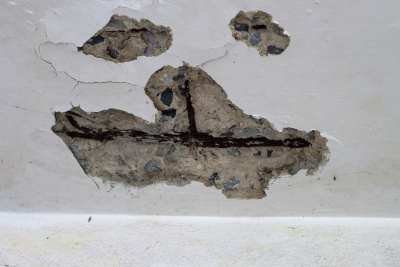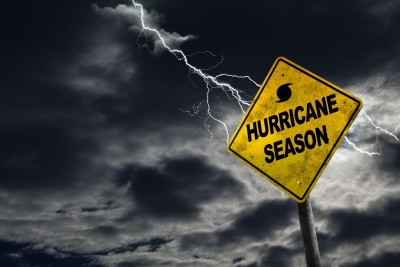Understanding Mold: 10 Common Types
Mold is a critical part of the earth’s recycling process. It breaks down organic materials and speeds up the decomposition process, making room for new plant growth to occur. While it has a role to play in nature, you don’t want mold growing in your home. If you suspect mold growth, determine what type it is and make a plan to get rid of it.
Warning Signs of Mold Growth
Mold spores are everywhere. All they need is a damp surface and an organic food source to establish a colony. Explore your mold remediation options if you spot any of these warning signs:
- Water stains on ceilings and walls
- Musty odors
- Plumbing leaks
- Standing water
- Prior flooding incidents
Categories of Mold
There are over 100,000 species of mold, but all of them fit into one of three broad categories:
- Pathogenic molds typically only cause reactions in people with suppressed immune systems or serious illnesses.
- Allergenic molds trigger allergic reactions and asthma attacks. The most serious symptoms appear in people with existing allergies.
- Toxigenic molds are the most dangerous. They produce mycotoxins that can lead to health problems, some of which may be lethal.
10 Types of Household Mold
Stachybotrys (Black Mold)
What is it? Toxigenic mold
Where does it grow? Damp areas
There are dozens of stachybotrys varieties, but two most noteworthy—stachybotrys chartarum and stachybotrys chlorohalonata—are also known as toxic black mold. Both strains are linked to poor indoor air quality resulting from high humidity. If you find greenish-black mold on drywall, wood, or other cellulose-based materials in your home, call a remediation specialist to take a look.
Trichoderma
What is it? Toxigenic mold
Where does it grow? Wet spots
Trichoderma grows rapidly in chronically damp areas, with some strains producing mycotoxins under certain conditions. If you see small, puffy patches of white and olive-green mold near leaky windows, tubs, or showers, call an expert for mold remediation.
Alternaria
What is it? Allergenic mold
Where does it grow? Humid bathrooms
Sinks, tubs, showers, and anywhere else moisture lingers may support Alternaria growth. You can spot it by its soft, velvety appearance and brown, hair-like filaments. Allergic reactions include asthma and hay fever symptoms.
Ulocladium
What is it? Allergenic mold
Where does it grow? Damp areas
Often appearing after water damage or flooding, Ulocladium needs a constant supply of water to survive. If damp materials dry out, the mold will likely die off. However, existing spores can remain dormant and flourish once again if future moisture occurs. Ulocladium resembles toxic black mold, so if you’re not sure what you’re dealing with, call an expert.
Serpula
What is it? Allergenic mold
Where does it grow? Wood structures
Serpula is only mildly allergenic, but it can be highly destructive. It feeds almost exclusively on wooden structures, even without much moisture present, making it infamous for damaging wood framing.
Mucormycetes
What is it? Allergenic mold
Where does it grow? Water-damaged structures and belongings
These molds are abundant in natural settings and may cling to clothing during the summer and fall. If they enter your home, mucor molds may grow in your AC unit’s condensate drip pan and drain line. Mucor appears white and fuzzy, darkening to a deep gray as it matures. Breathing mucor mold spores may cause asthma attacks and breathing difficulties.
Aureobasidium
What is it? Allergenic mold
Where does it grow? Beneath water-damaged wallpaper
You may find Aureobasidium behind wallpaper while stripping it from the wall. This mold can also grow on painted surfaces, bare wood, and porous grout tiles. Nicknamed “sooty mold,” Aureobasidium is a yeast-like organism that can irritate the skin if touched.
Penicillium
What is it? Allergenic mold
Where does it grow? Damp areas
Penicillium is the source of lifesaving antibiotics, but you don’t want any strain of this mold growing in your house. Velvety, bluish-green growths send spores into the air that can trigger asthma episodes, breathing difficulties, and sinusitis.
Chaetomium
What is it? Allergenic and pathogenic mold
Where does it grow? Water-damaged homes
Because it thrives in dark, humid spaces, Chaetomium spores often grow inside interior wall cavities following a flood or plumbing leak. The mold can spread from this hidden location, remaining unnoticed until it causes watery eyes, sneezing, and an itchy throat. By then, the mold may have taken over a large area within the wall.
Aspergillus
What is it? Pathogenic mold
Where does it grow? HVAC systems
Most of the 180 Aspergillus strains are non-toxic, but some can cause serious allergic reactions, respiratory infections, lung irritation, and asthma attacks. These molds are hard to pinpoint because they come in different colors and textures.
Mold Inspection & Cleaning in Frederick & Montgomery County
The good news is that no matter what type of mold you find in your home, registered fungicides can kill it. Because allergenic and toxigenic molds present potential health risks, it’s best to leave mold inspection and cleaning to a professional.
Budget Waterproofing has you covered! Let us help protect your family from the adverse effects of mold with our advanced testing and treatment protocols. We can then help prevent recurrent mold growth by waterproofing your basement, the most common place for mold to grow in the home. To schedule mold remediation and waterproofing services, please contact us.


